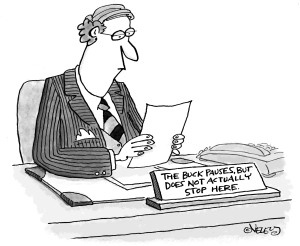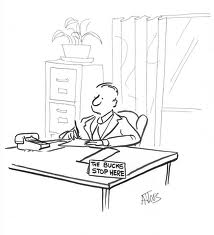Those who have refined this are more successful and happy and those who haven’t aren’t:
The book How to Win Friends and Influence People tells the story of a man called “Two Gun Crowley” who had barricaded himself in a New York apartment while 150 to 300 cops and detectives laid siege on him. Why was Crowley in this situation? Well, the police commissioner said, at a press conference, that Two Gun Crowley was one of the most dangerous criminals and would kill “at the drop of a feather.”
A short time before the siege, Crowley shot and killed a police officer after being pulled over for a routine traffic stop. No warning! Nothing! Shot and killed the young officer in cold blood, and this was not the first time Crowley had shot someone. It’s pretty clear how dangerous he was to the public. Yet, it’s important to note how Crowley viewed himself.
At the end of the siege Crowley opened fire on the cops exchanging bullets for hours. During the siege he wrote a note that gives insight into how he viewed himself. It said, “Under my coat is a weary heart, but a kind one–one that would do nobody harm.”
What!?!? That statement is just oozing with self-deception and justification. Hours after killing someone he wrote, “I would do nobody any harm.” Why is there such a deception between reality and Crowley’s personal view?
Although this is an extreme example, people get trapped in justification, pushing blame on others, and avoiding personal accountability. It reminds me of a C.S. Lewis quote:”When a man is getting better he understands more clearly the evil that is still left in him…A moderately bad man knows he is not very good, and a thoroughly bad man thinks he is all right.” Cowley seemed to think he was never in the wrong. He had even been quoted to say after being sentenced to the electric chair, “This is what I get for defending myself.”
Today’s culture values the facade of how something or someone appears to be than what it really is. This drive to protect one’s image, ego or reputation comes at a great price–stagnation in their personal growth and self-deception.
Through brutally honest evaluation people can evaluate their mistakes and weaknesses in order to turn the problem into an opportunity to grow. Furthermore, through identifying and accepting our personal weaknesses and faults will our life results change.
I once went to a training seminar on a therapy model called DBT. As we learned new skills and practiced them it was easy to feel awkward, clumsy, and vulnerable. I think in an attempt to help us trainees see the purpose in our discomfort the trainers had a little saying they would share, “Do you want to look good or be good?”
This mantra is great because it took the focus off the spirit of performance and on the mastering of unfamiliar skills. Stephen Covey explained that this focus on personality instead on principles and character is one of the issues stagnating leadership and self growth.
Orrin Woodward in his book Resolved quotes a guy who gave a speech to Harvard Business School entitled, “Why Harvard Can’t Teach Ethics.” The speaker Chuck Colson said, “I expected a riot after my 45-minute talk in a packed lecture hall. But the students were docile; I didn’t hear a single good question. Were the students so unfamiliar with moral philosophy they didn’t know enough to challenge me? I left Harvard worried. What would happen to these students when they became leaders of American business? One of the students at Harvard during that period was Jeffery Skilling, the now-discredited former Enron CEO.
Enron’s collapse exposes the glaring failure of the academy. Ethics historically rests on the absolute truth, which these institutions have systematically assaulted for four decades.”
 Enron’s deceitful Skilling and Two Gun Cowley fell into the trap of justifying their behaviors using situational ethics to make their decisions “appear right” and justified themselves “to feel good” in breaking absolute truth. Although there are not always immediate consequences for justifying, in the long haul they fell short of what was really desired. Why? Because they avoided looking in the mirror and saying, “What I am doing is wrong, I made a mistake.” Instead they most likely said, “I am above that and I am always right.” Cowley didn’t become a killer overnight. Skilling didn’t cook his books in one afternoon. Both got there by telling themselves little lies and justifying their actions–therefore slanting the truth blurring fantasy based thinking with reality. Little by little they most likely tricked themselves to where they could not see the cause and effect of their choices. This inability to take accountability and responsibility for their actions, and thus avoiding necessary adjustments, lead Skilling to make one of the largest white collar crimes ever, and Two Gun Cowley to make the distorted statement that “[I] would do nobody any harm.”
Enron’s deceitful Skilling and Two Gun Cowley fell into the trap of justifying their behaviors using situational ethics to make their decisions “appear right” and justified themselves “to feel good” in breaking absolute truth. Although there are not always immediate consequences for justifying, in the long haul they fell short of what was really desired. Why? Because they avoided looking in the mirror and saying, “What I am doing is wrong, I made a mistake.” Instead they most likely said, “I am above that and I am always right.” Cowley didn’t become a killer overnight. Skilling didn’t cook his books in one afternoon. Both got there by telling themselves little lies and justifying their actions–therefore slanting the truth blurring fantasy based thinking with reality. Little by little they most likely tricked themselves to where they could not see the cause and effect of their choices. This inability to take accountability and responsibility for their actions, and thus avoiding necessary adjustments, lead Skilling to make one of the largest white collar crimes ever, and Two Gun Cowley to make the distorted statement that “[I] would do nobody any harm.”
The sad truth is that many have fallen for this same type of justification. We live in a world that turns from absolute truth and preaches that life is amoral and there is no definite right or wrong. How sad! C.S. Lewis said “A man does not call a line crooked unless he has some idea of a straight line.” When we look ourselves in the mirror we need to see our crooked lines and strive to align them with absolute truth (the straight lines) by outdoing our yesterdays with today.
Dell’s Former CEO, Kevin Rollins, took this approach owning up for his part of the problem. After not reaching expected production that lead to an estimated loss of several hundred million dollars during the 2nd quarter in 2005. Rollins made statements much different then Skilling, who skewed the numbers to show profits in Enron’s book. Rollins said at the press conference, “Frankly, we executed poorly on managing overall selling prices.” What?!? He took accountability for a multimillion dollar issue? Chris Brady and Orrin Woodward said in their book Launching a Leadership Revolution, “Properly defining a problem is the biggest part of solving it.” This is not the first time Rollins showed his desire to strive for excellence by properly defining the problem.
 We are losing the art of building men and women of character today. It is not uncommon to know, see, or hear of individuals that justify their actions to protect their reputation. The saddest thing of this poor practice is that this type of behavior leads to more justification. Stephen Covey taught that whenever we see the problem outside of us, that is the problem! This leads to a cycle of poor results. I think it is about time for us to say, “I made a mistake.” Let’s turn the mistake into a learning opportunity, and stop making excuses. Let us grow beyond ourselves, so we can be ourselves.
We are losing the art of building men and women of character today. It is not uncommon to know, see, or hear of individuals that justify their actions to protect their reputation. The saddest thing of this poor practice is that this type of behavior leads to more justification. Stephen Covey taught that whenever we see the problem outside of us, that is the problem! This leads to a cycle of poor results. I think it is about time for us to say, “I made a mistake.” Let’s turn the mistake into a learning opportunity, and stop making excuses. Let us grow beyond ourselves, so we can be ourselves.


I think an excellent portrayal of the self-deception we try to hide behind (which is like an ostrich sticking it’s head in the sand) is given in C.S. Lewis’ book “The Great Divorce.” Where those from Hell take a bus to a certain part of Heaven and are given the opportunity to stay and those who don’t want to can get back on the bus to return to Hell. Lewis then depicts account after account of how people hold on so tightly to their self-deception. That, “nothing is wrong with me” mentality.
This is a powerful, and very humbling, thing to do; to make sure “The Buck Stops Here.” Thank you for the expounded view and reminder to not excuse myself from being the best me. “Let us grow beyond ourselves, so we can be ourselves.”